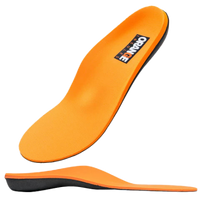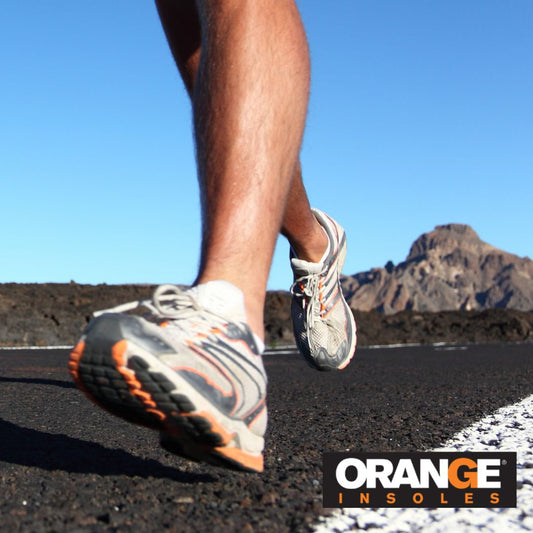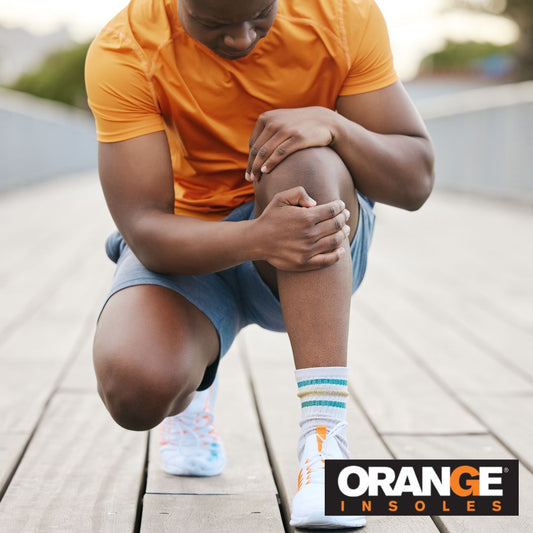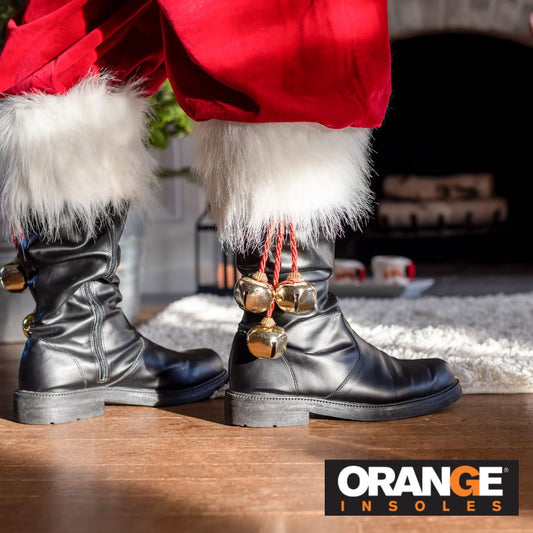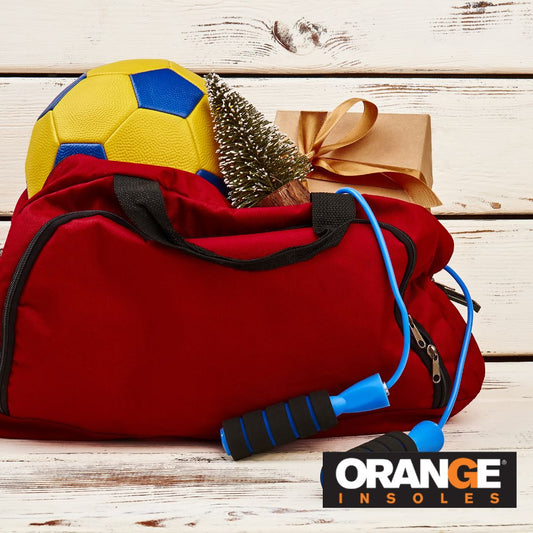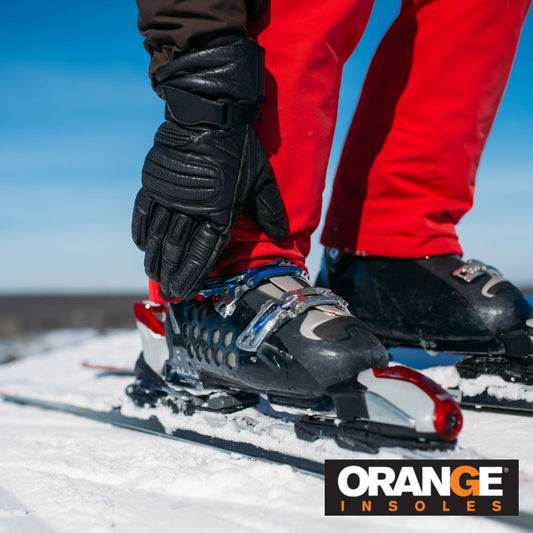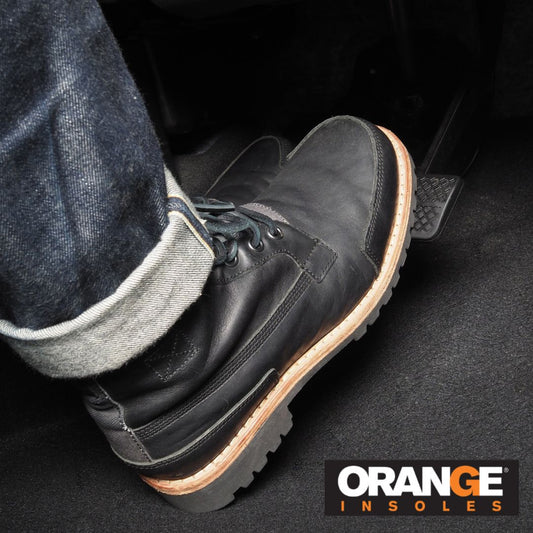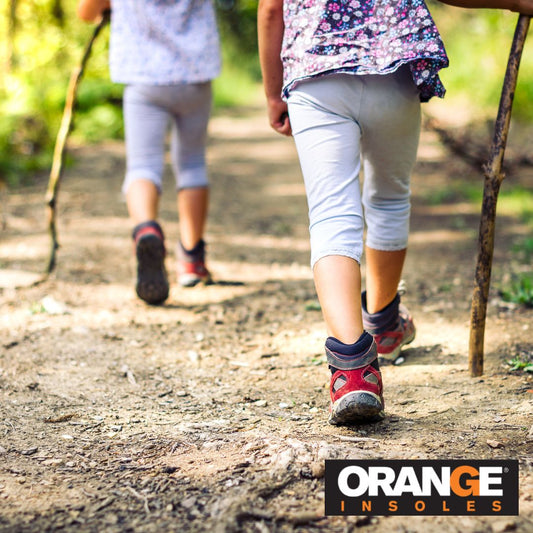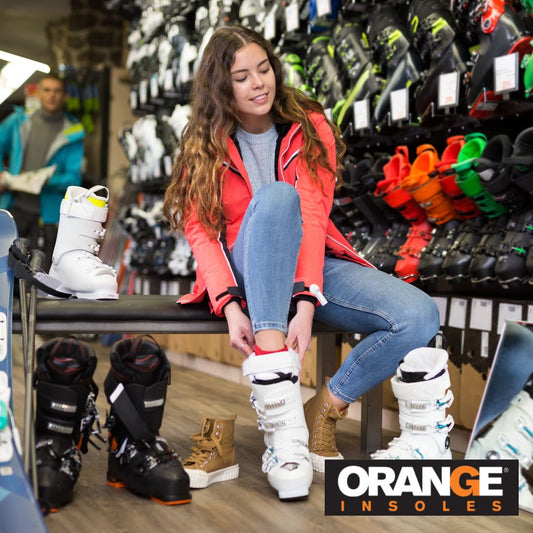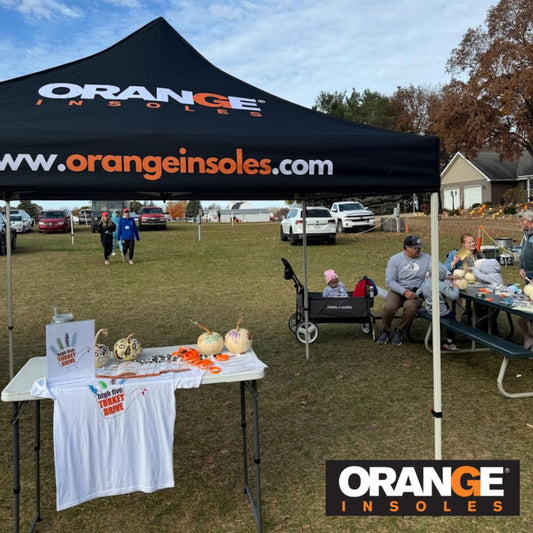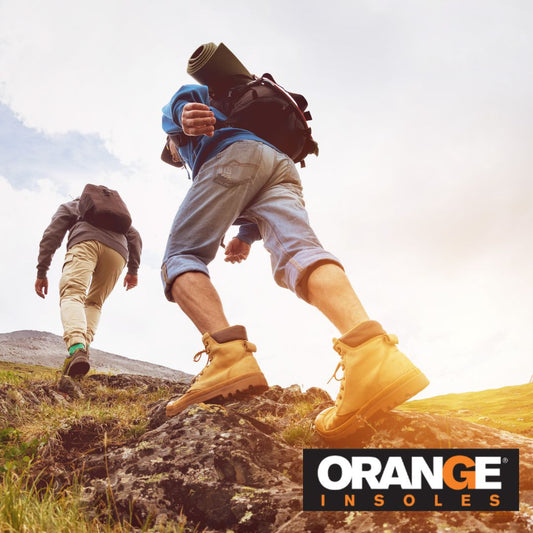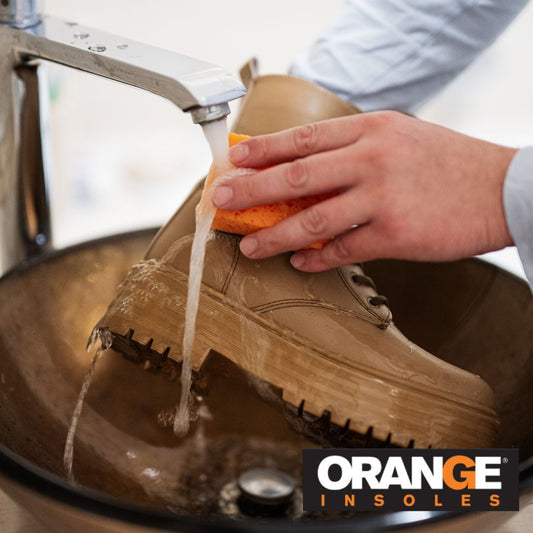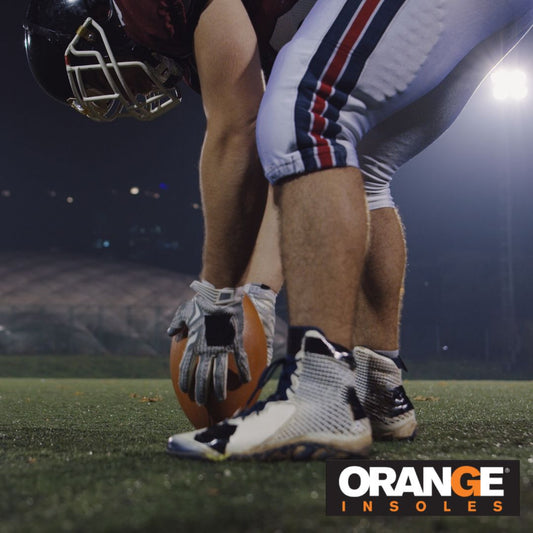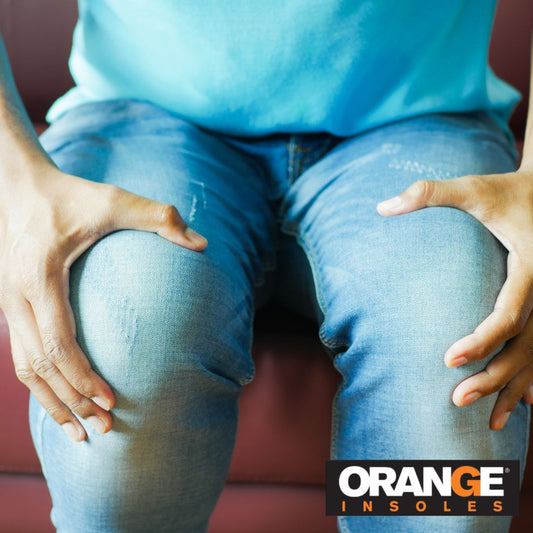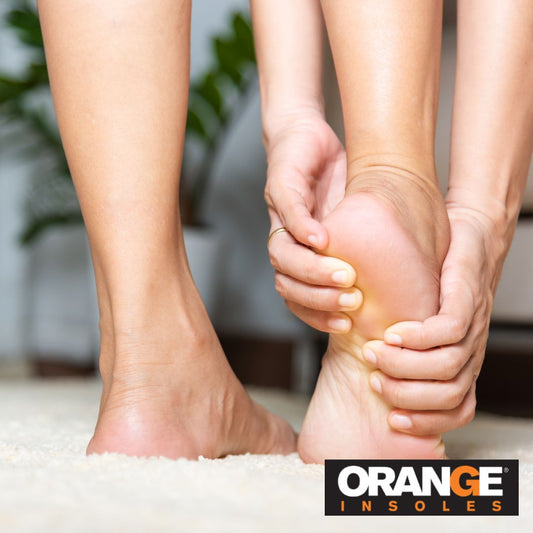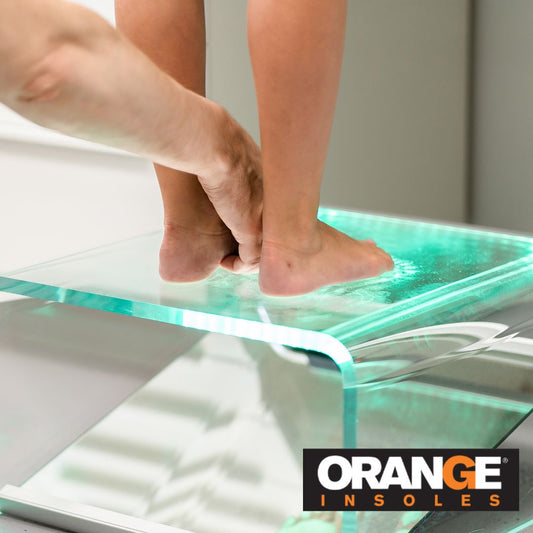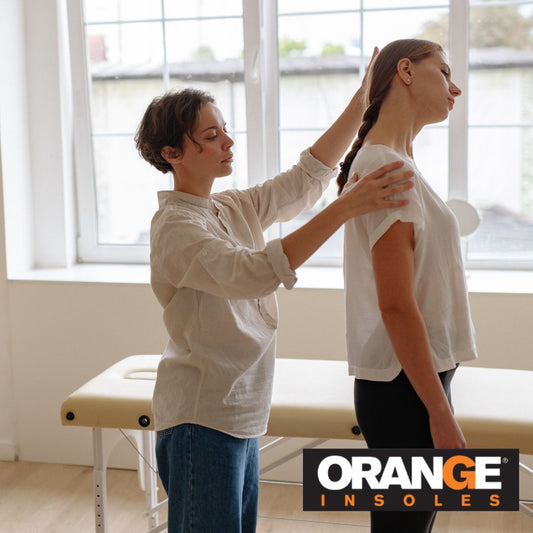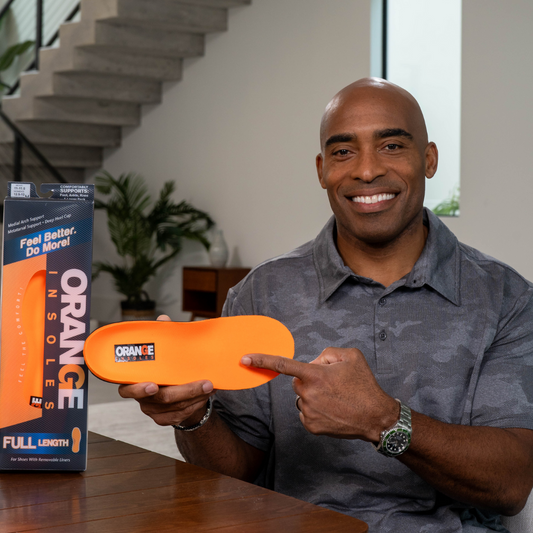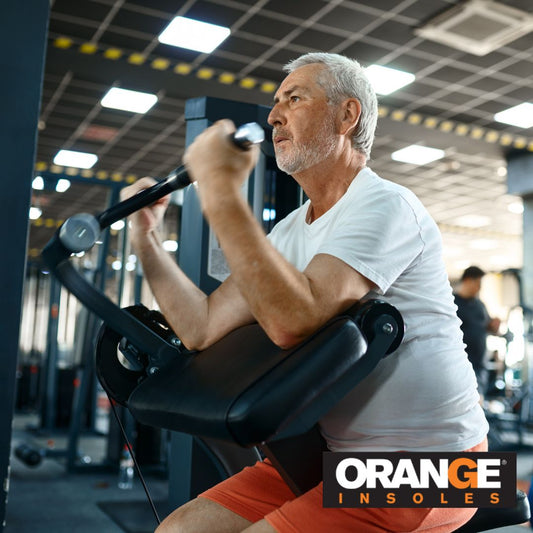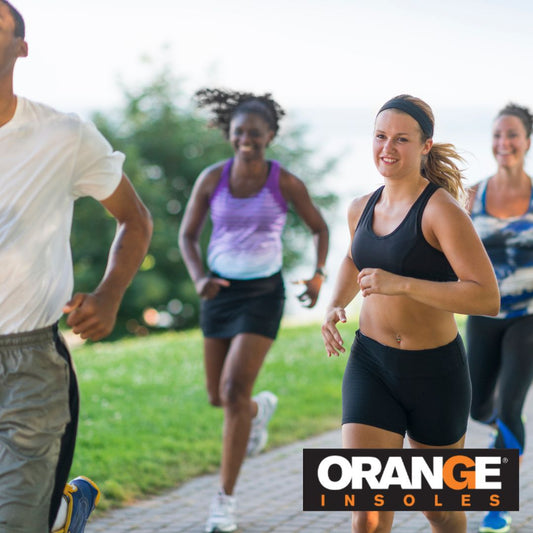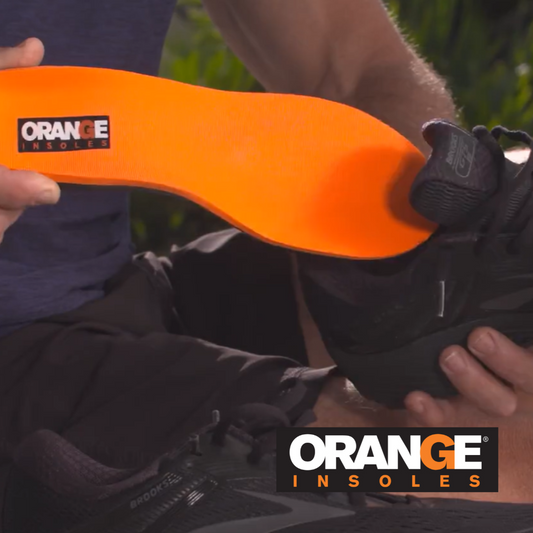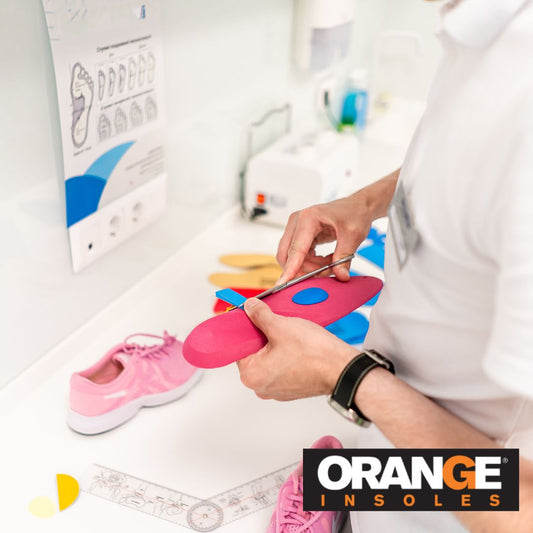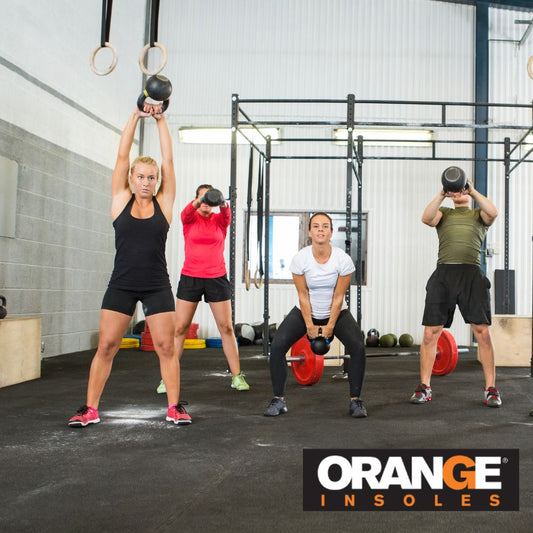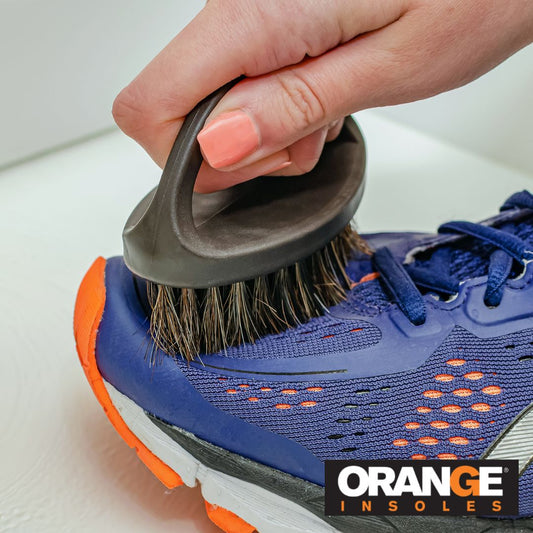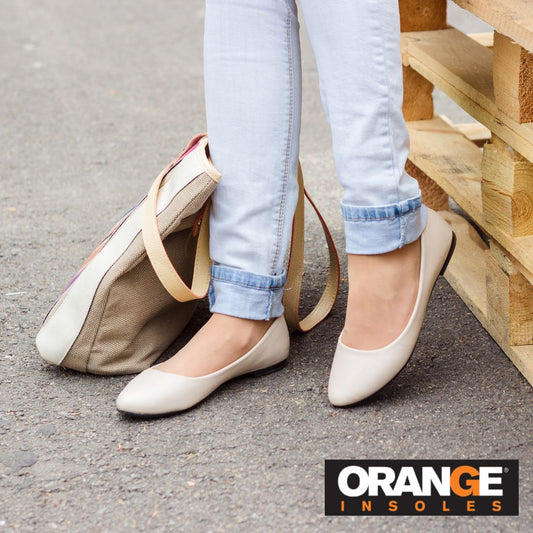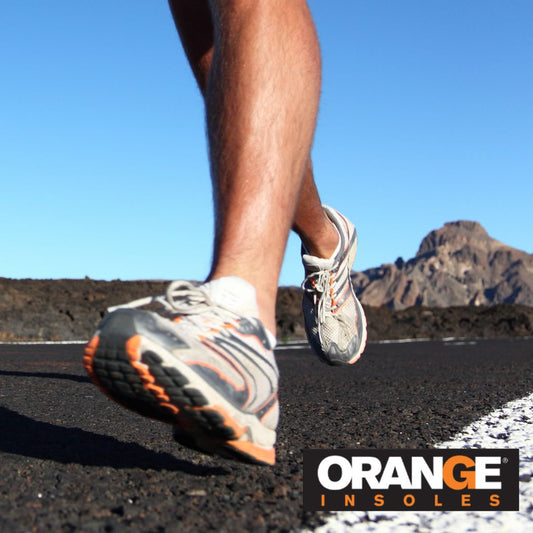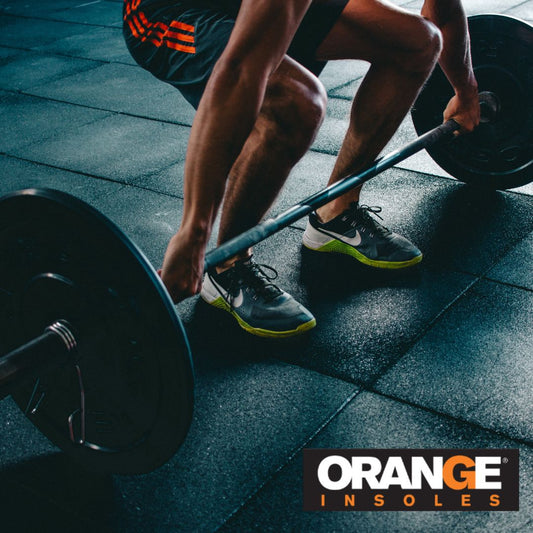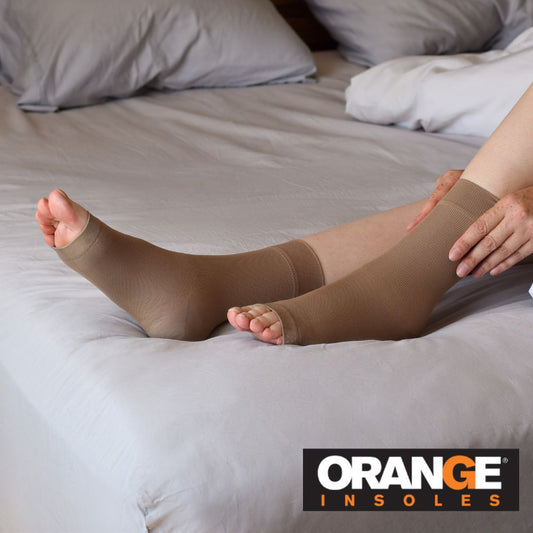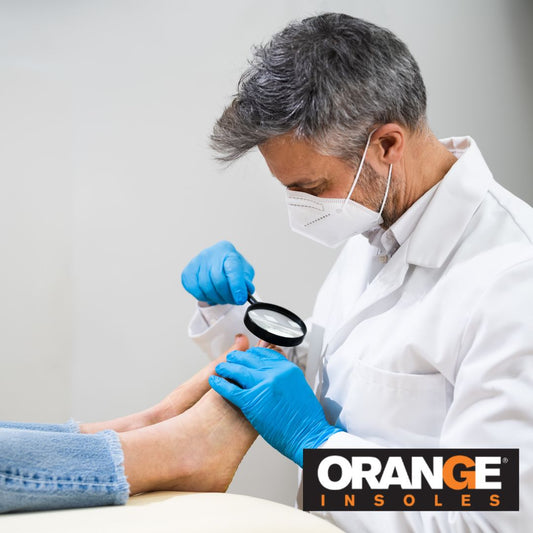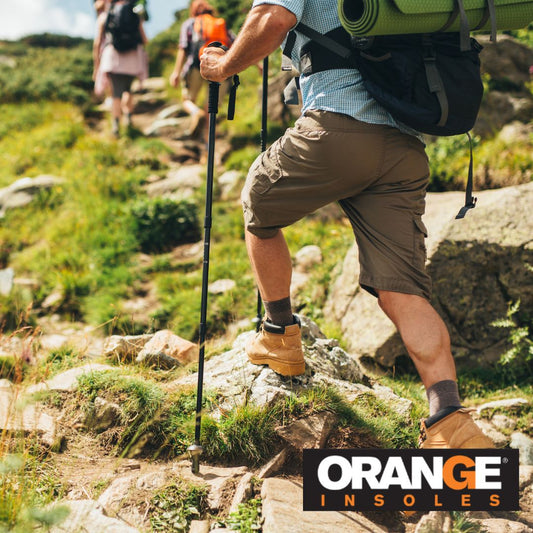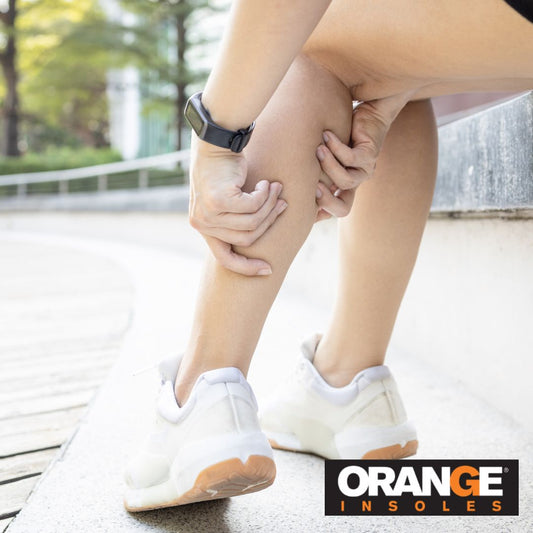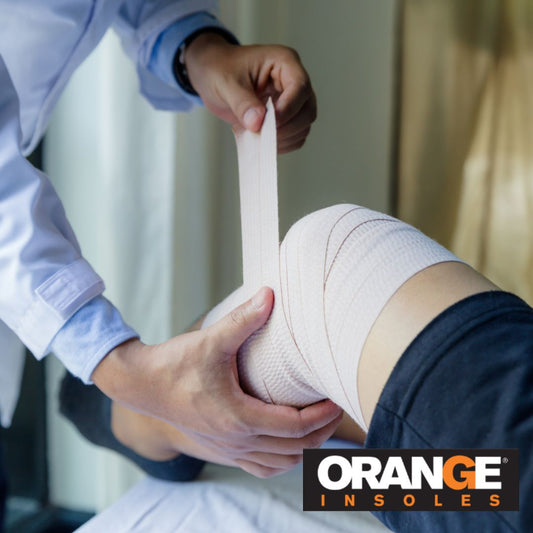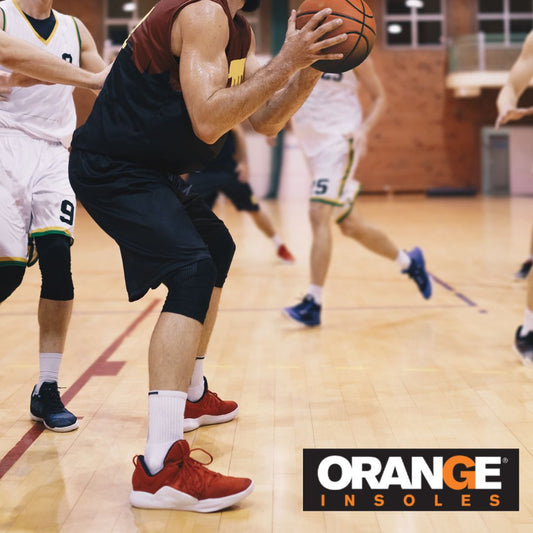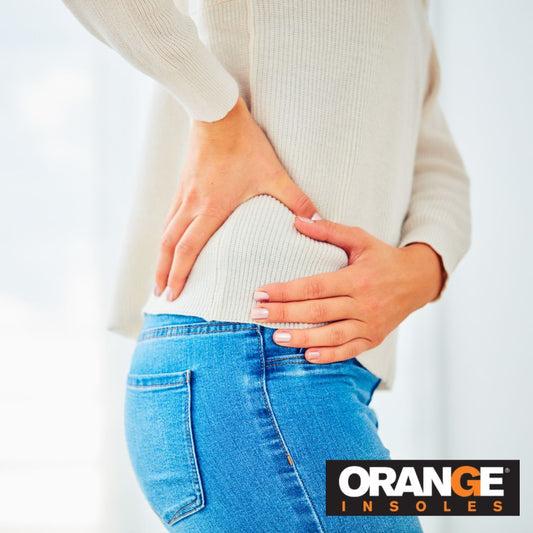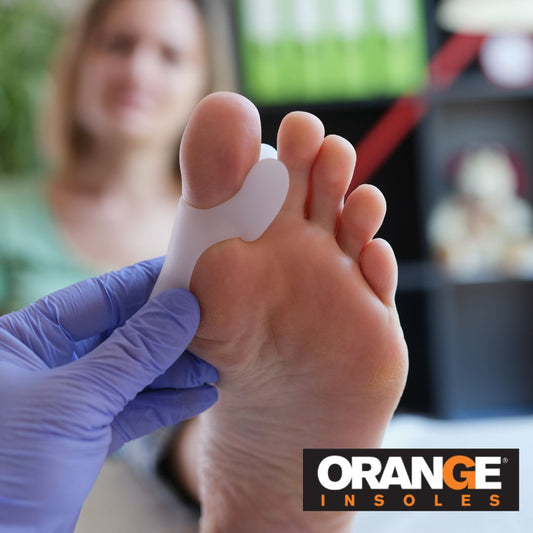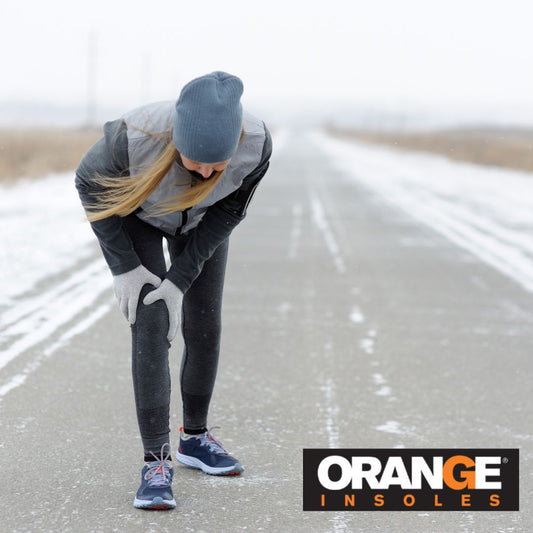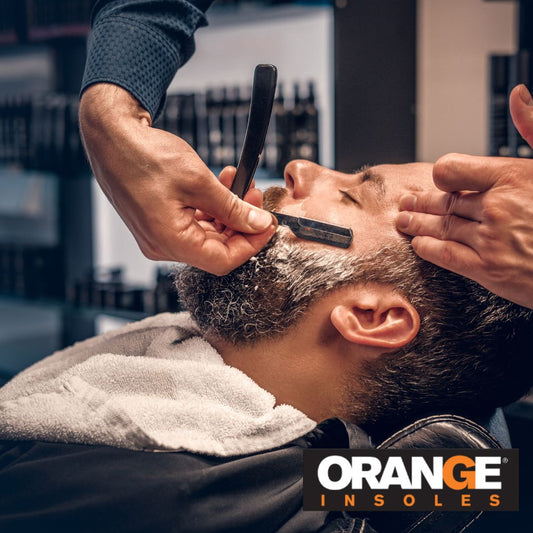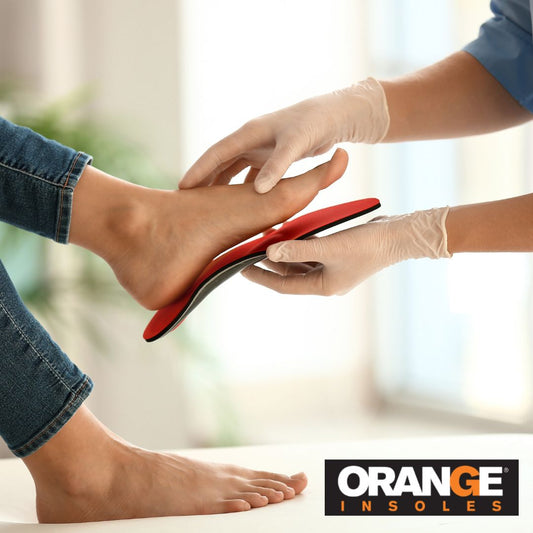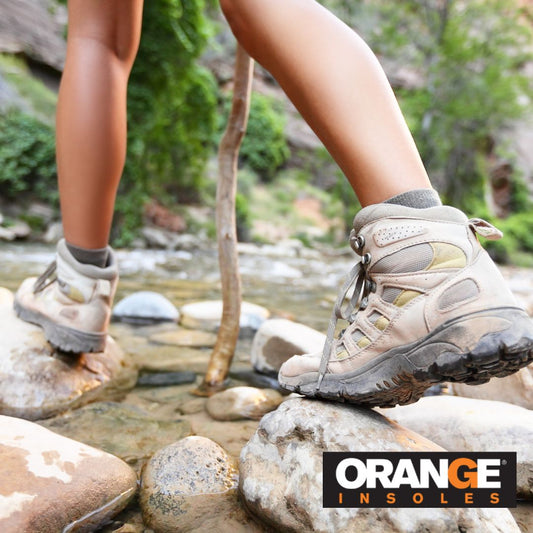It’s the start of a new year and in our last post we talked about how you can set yourself up for success when it comes to goal setting and health. Now that you have your SMART goals, make sure you don't let injury or poor foot and joint health prevent you from achieving them. A lot of people start off strong at the beginning of a year and then lose steam either because they shot too high, or didn’t take the proper precautions and got injured. Don’t let that happen to you!
Let’s take a look at some of the ways adding an insole to your workout or athletic shoes can help you stay aligned, prevent injuries, keep your feet happy, and reach your health and fitness goals!
Avoid Injury Due to Misalignment
We already know how important it is to keep your body in alignment, but alignment doesn’t just mean a “straight” spine and good posture. Proper alignment starts in the feet and can impact every muscle, tendon, and ligament in your body. Orange Insoles can address specific biomechanical or alignment issues that begin in the feet like overpronation or supination.
When we roll our feet either too far inward or too far out, we risk putting extra stress on our knees or the muscles that connect from the feet all the way up the leg to the lower back. Everything is connected so if one limb is pulling in an unnatural direction, everything is impacted.
Once you add high impact and movement to an already misaligned body, you risk injuries or issues like:
- Plantar Fasciitis: Caused by excessive stretching and strain on a band of tissue that connects the heel bone to the toes called the plantar fascia.
- Shin Splints: Improper foot and leg alignment, as well as overpronation, can result in increased stress on the shinbone (tibia). This can lead to pain along the shin, a condition commonly referred to as shin splints.
- Runner’s Knee: Abnormal knee tracking due to poor biomechanics can lead to pain around the patella (kneecap).
- Tendonitis: Misalignment or overuse of certain tendons due to poor biomechanics can result in tendonitis, which is inflammation of the tendons. Common areas affected include the Achilles tendon, patellar tendon, and posterior tibial tendon.
- Lower Back Pain: Faulty biomechanics in the lower extremities can impact the alignment of the spine. Over time, this may contribute to lower back pain, especially if there is poor posture or misalignment during weight-bearing activities.
Insoles help with alignment by holding the foot in its proper position and reducing strain or wear and tear on muscles that shouldn't be overworked.
Avoid Injury Due to Poor Shock Absorption
Your shoes should be working as hard as you do when you’re hustling toward your fitness goals. As you pound the pavement, your shoe should absorb the shock of that impact and distribute the weight evenly across the foot. If this doesn’t happen, injuries can occur.
In addition to the shin splints, tendonitis, and low back pain mentioned above, these are some common injuries caused by insufficient shock absorption.
- Stress Fractures: When the bones are not adequately protected from impact forces, such as during running or jumping, stress fractures can occur. Insufficient shock absorption may contribute to excessive stress on bones, especially in the feet and lower limbs, leading to tiny cracks in the bone.
- Achilles Tendonitis: The Achilles tendon, located at the back of the ankle, can be affected by poor shock absorption. Inadequate cushioning may contribute to increased stress on the tendon, leading to inflammation and pain.
- Metatarsalgia: This condition involves pain and inflammation in the ball of the foot. Poor shock absorption can contribute to increased pressure on the metatarsal bones, leading to pain and discomfort in the forefoot.
Insoles with a cushioning foam (like Orange Insoles) can absorb shock during activities like running or walking. This helps reduce the impact on the joints, muscles, and ligaments, potentially lowering the risk of injuries, especially in high-impact sports.
Avoid Injuries Due to Muscle Fatigue
Muscle fatigue occurs when muscles are unable to generate or sustain the necessary force for a particular activity. When muscles become fatigued, their ability to provide support and stability is compromised, increasing the risk of various injuries.
- Strains: Muscle strains, also known as muscle pulls, occur when muscle fibers stretch or tear. Fatigued muscles are more prone to strains, especially during activities that involve sudden or excessive force. Commonly affected muscles include the hamstrings, quadriceps, and calf muscles.
- Sprains: Ligaments connect bones and stabilize joints. When muscles surrounding a joint become fatigued, they may provide inadequate support, increasing the risk of sprains. Ligaments can be stretched or torn, leading to pain, swelling, and instability in the affected joint.
- Overuse Injuries: Repeated stress on muscles without adequate rest can lead to overuse injuries. Fatigued muscles are less able to absorb shock and may contribute to overuse conditions like shin splints, iliotibial band syndrome, or patellofemoral pain syndrome.
- Muscle Cramps: While not a direct injury, muscle cramps can result from fatigue. When muscles are overworked and fatigued, they may involuntarily contract, causing painful cramps. Cramping can be a sign that the muscle is not receiving sufficient support and may be prone to injury.
Insoles that provide proper support can help reduce fatigue and muscle strain, especially during prolonged periods of standing or physical activity. When muscles are less fatigued, the risk of injuries may be lower.
Remember if these injuries are something that clicks with you, we recommend medical attention from a professional. Don’t get pulled from the game before you even get started. Make sure you stay strong all through 2024 by using an Orange Insole during your favorite activities and throughout your day to prevent injury and improve your overall foot health so you can achieve all your fitness goals this year!
